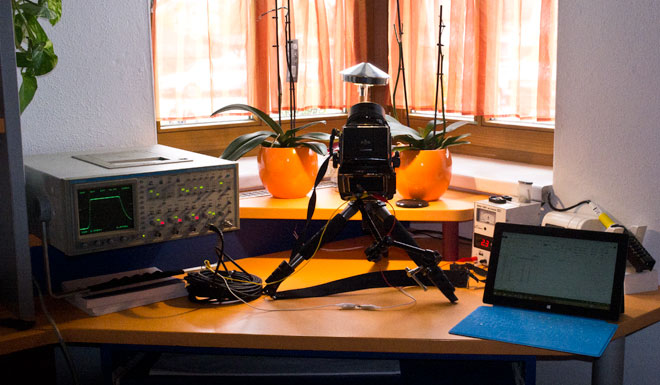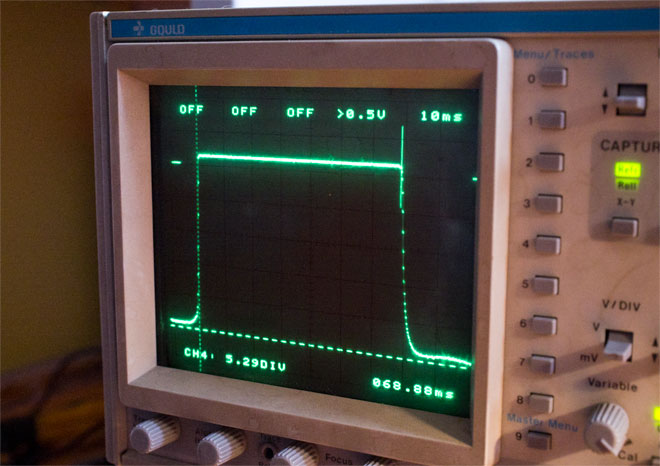While apertures usually stay constant their whole life (they might get a bit slow when the blades get oil on them), shutters might change their speed over time – especially mechanical ones that depend on springs and friction. Until recently, I used a “reliable” camera with a quartz controlled shutter as reference and used my Minolta FlashMeter IV to get readings. It was quite accurate, but I could only compare cameras to one I hoped is spot on.
I also tried other methods, like using a CRT TV or a microphone and sound-editing software, but the first is again more guessing and the 2nd dosn’t work with every shutter. Recently I get my hands on a digital storage oscilloscope and I decided to use that to test shutters in future. I had a broken EOS 5000 around that I salvaged a photo diode from (a silicon blue cell) and with a few extra wires around, I quickly put together a accurate (mostly, will explain at the end) shutter test. Here is a photo of my setup:

DSO on the left, Mamiya RB on the test stand, Surface RT to keep notes (Excel rules 
Right now everything is just put together with test leads and the normal desk lamp, however I plan to make it a dedicated probe for shutter testing, but I might try out different photo diodes before that. I want to try an IR only diode together with an IR LED to block out the problem with stray light. Also I might want to see if I can get a faster photo diode to improve to accuracy of very short shutter speeds (1/1000 and faster). I didn’t manage to check all my cameras, since a few of them have film inside, and others are currently low on battery (looking at the EOS 33V), but I started sampling, here are the results. To make sure the shutter speed is consistent, I fired the shutter several times for each setting. Most were fine, only the Kiev had massive changes in time for the same shutter speed displayed, so I took it out of the list. The following chart shows how many stops the shutter is off compared to an perfect shutter:
There were a few disappointments, but overall I’m happy with the outcome. Everything within 1/3 can be considered spot on, and since I’m mostly doing BW negative anyway, even up to 0,6 should be no problem. The worrying results from the two Mamiya lenses might come from the leaf shutter design, I have to do some more testing in future with different kind of light sources. But its not as I used those high speeds a lot. Stay tuned for more test results. I’m looking forward to check the Konica Hexar RF. And if you are interested, here is what 1/15 from the Olympus OM-2 looks like:

1/15 from the Olympus OM-2 on the DSO